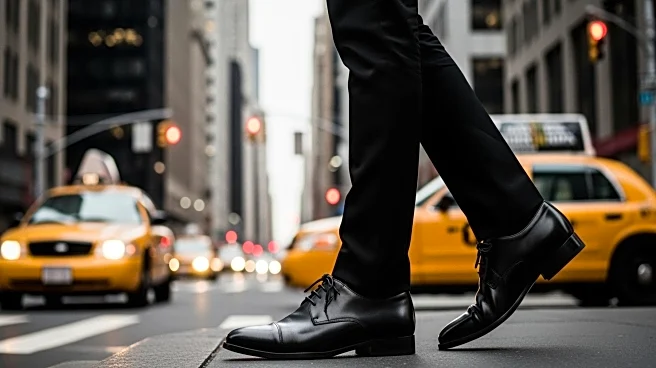What's Happening?
Fitness experts are suggesting ways to make daily walking routines more effective by incorporating additional challenges. According to Tyler Moldoff, a physical therapist at the Hospital for Special Surgery
in New York, using weighted vests or backpacks filled with books can increase metabolic rate and improve oxygen consumption, which in turn strengthens leg muscles. Matthew Nolan, a chief instructor at Barry’s in New York City, highlights the cardiovascular and mental health benefits of walking, noting that it can lower blood pressure and improve mood through the release of endorphins. The experts recommend maintaining a brisk pace, incorporating interval jogging or speed walking, and adding strength training exercises like squats and lunges during walks. Walking on hilly paths is also advised to enhance muscle strength and cardiovascular health.
Why It's Important?
Walking is a widely accessible form of exercise that offers significant health benefits, making it crucial for public health promotion. By enhancing walking routines, individuals can achieve greater cardiovascular health, muscle strength, and mental well-being. This approach can be particularly beneficial for those with chronic pain conditions, such as lower back or knee pain, as it provides a low-impact exercise option. The recommendations aim to maximize the health benefits of walking, encouraging more people to adopt regular physical activity as part of their lifestyle. This could lead to a reduction in healthcare costs associated with heart disease, stroke, and mental health issues, benefiting both individuals and the healthcare system.
What's Next?
As more people become aware of the enhanced benefits of walking, it is likely that fitness programs and public health campaigns will incorporate these strategies to promote walking as a comprehensive exercise. Fitness trainers and health professionals may begin to offer more structured walking programs that include these elements, potentially leading to an increase in community walking groups and events. Additionally, urban planning could see a shift towards creating more pedestrian-friendly environments with varied terrains to support these enhanced walking routines.
Beyond the Headlines
The emphasis on walking as a key component of a healthy lifestyle reflects a broader cultural shift towards sustainable and accessible fitness practices. This trend aligns with growing awareness of the importance of mental health and the need for exercise options that are inclusive and adaptable to different fitness levels. The recommendations also highlight the potential for walking to serve as a gateway to more active lifestyles, encouraging individuals to explore other forms of physical activity and wellness practices.











